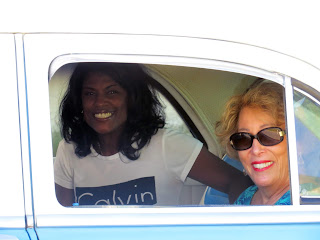
Everything you wanted to know about pitching but were
afraid to ask: Tyler Kepner’s
K; A
History of Baseball in Ten Pitches
My hard cover collection of books is mostly by novelists and
short-story writers I have admired over the years as well as hard-to-toss gems
from my years as a publisher and even some reaching back into my college
days.
So, it was unusual for me to spend the 20 bucks or so for
a baseball book, but I did so as it addresses the heart of the game, pitching,
and as a former sandlot pitcher in my salad days, a crafty lefty as I thought
of myself, using “’junk” pitches to get guys out who were accustomed to seeing
only fast balls from my contemporaries, I thought this book would be ideal to
feed boyhood fantasies. Having played
the game adds to the appreciation of what (I think, but I’m prejudiced) is the
most perfect game invented, mirroring the game of life itself.
I liked the way Tyler Kepner describes his history,
devoting “a chapter apiece to the fastball, the curveball, the sinker, the
slider, the cutter, the changeup, the splitter, the screwball, the knuckleball
and the spitball.” Finally I thought to
myself, here is a book about baseball from the inside, not just players
recollecting about the old days, but much about strategy and the execution of
these pitches.
I threw some of them myself, although back then, and I’m
talking the 1950’s, we didn’t have the variety of names for all of them and
when I was throwing my fastball (which given my size was not very fast), it was
with a hope I could place it accurately.
Mostly, I relied on a curve ball, slider and the little thrown and
understood screwball.
Kepner does not cover the natural movement of a lefty’s
fastball. Lefty pitchers simply have
more movement on their fastballs away from right handed hitters, although he
does acknowledge that “because lefties are harder to find, they tend to get
more chances to stick….Lefty relievers invariably need a breaking ball that
moves away from a lefty hitter; once they have that to go with a fastball,
there’s usually little need for a third pitch.”
Well I did need a #3 and my screwball was simply a more exaggerated
variation off my fastball, at a slower speed and a bigger break. In effect it was my changeup. My bread and butter pitch to right-hander
hitters, the big decision being when and how often in a batter’s pitch count to
throw it.
One thing that adequately comes across in Kepner’s book
is one of the reasons I could never move beyond high school with my pitching
skills. The bigger you are, the harder
you could throw and generally the larger your hands.
Small-in-stature pitchers were and are a rarity. No
wonder my idol as a kid was 5’6” Bobby Shantz who played for a number of teams
in the 50’s and 60’s, including the NY Yankees.
He pitched with guile and a great curve ball and earned the MVP award in
1952, when I started to follow him, with 24 wins. He ended his career with a 3.38 ERA which,
today, would get you a $10 million a year contract over multi years. Bobby never saw that kind of $$ and Kepner’s
book doesn’t mention him although he does address the size issue and, not
surprisingly, under the screwball chapter.
Left hander Daniel Ray Herrera of the Reds “made 131 appearances
from 2008 to 2011, and without the screwball, he would have made none. He used it because he could not throw a changeup
and it distinguished him just enough to give him his modest career. Herrera’s quirky profile fit the pitch: 5
foot 6, and at the time of his debut, no pitcher had been shorter in more than
50 years,” perhaps a veiled reference to Shantz.
Of course, he can’t cover everyone, and that is not why I
was slightly disappointed by this book.
Maybe I was expecting too much, an easy to follow and interesting
narrative of these ten pitches, how they’re thrown, and the strategy of
throwing them when they are thrown.
Kepner does address these issues, but in an encyclopedic, almost
academic way. After all he interviewed
some 300 people and this book is distilled from those interviews, almost
chaotically, and a little repetitiously I thought. It was nice to hear the inside stories of so
many of the pitchers I admired over the years, but this book often fails to be
a coherent narrative. Sometimes it reads
more like a dissertation without the footnotes.
Nonetheless, being so familiar with the game itself,
there were revelatory elements. What
especially stood out is the “hand me down” nature of throwing these pitches,
how one generation passed on the skill to others. And that is part of the mystery of pitching
as well; each pitcher modifies these pitches to fit their unique hands, delivery,
and to compliment their other pitches.
No pitcher throws all ten and few throw and hold the pitch the exact
same way. This is why it’s an art as
much as a science.
All pitchers though in the majors need some kind of fast
ball even if it is “only” in the high 80 mph range, to make their other bread
and butter pitches more effective. I
used to experiment with fork balls, splitters but my hands were just too small
to hold those pitches properly. This
comes through so clearly in Kepner’s account:
if you want to pitch in the big leagues, throwing hard and having large
hands are clear advantages.
There are anecdotes galore in this book, a gold mine of
information, but trying to piece them altogether into the narrative I had
expected was frustrating. Still, I now
have it as a reference work. Play ball!








